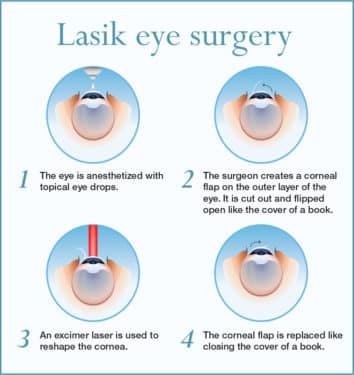Interested In Discovering The Differences Amongst SMILE, LASIK, And PRK Procedures For The Eyes?
Interested In Discovering The Differences Amongst SMILE, LASIK, And PRK Procedures For The Eyes?
Blog Article
mouse click the following web page Develop By-Munksgaard Tang
If you've been considering SMILE eye surgical procedure, you could ask yourself exactly how it compares to LASIK and PRK. Each procedure has its very own collection of advantages and considerations. From quicker healing times to possible risks, there are key distinctions you need to know prior to choosing. Comprehending these differences will assist you make an educated choice that lines up with your certain needs and expectations. Interested to understand more about exactly how these treatments contrast in detail? Keep on discovering to gain a thorough understanding of SMILE, LASIK, and PRK.
SMILE Eye Surgical Treatment Introduction
If you're thinking about SMILE eye surgery, you'll locate it to be a minimally invasive procedure with a fast recovery time. During SMILE (Little Laceration Lenticule Extraction), a laser is utilized to create a tiny, exact incision in the cornea to get rid of a small piece of cells, improving it to correct your vision. This differs from LASIK, where a flap is created, and PRK, where the outer layer of the cornea is completely eliminated.
One of the key advantages of SMILE is its minimally intrusive nature, resulting in a faster recovery procedure and less discomfort post-surgery. The recovery time for SMILE is relatively quick, with several patients experiencing boosted vision within a day or two. This makes it a preferred option for those seeking a practical and reliable vision improvement procedure. Additionally, SMILE has actually been revealed to have a lower risk of completely dry eye disorder contrasted to LASIK, making it a beneficial alternative for people concerned regarding this prospective adverse effects.
Distinctions In Between SMILE, LASIK, and PRK
When contrasting SMILE, LASIK, and PRK eye surgical treatments, it is essential to comprehend the distinctive strategies used in each treatment for vision modification.
SMILE (Tiny Cut Lenticule Removal) is a minimally intrusive procedure that involves producing a little laceration to extract a lenticule from the cornea, reshaping it to correct vision.
LASIK (Laser-Assisted Sitting Keratomileusis) entails developing a thin flap on the cornea, making use of a laser to improve the underlying cells, and afterwards repositioning the flap.
PRK (Photorefractive Keratectomy) removes the external layer of the cornea prior to improving the tissue with a laser.
The primary distinction lies in the means the cornea is accessed and dealt with. SMILE is flapless, making it a good option for people with slim corneas or those involved in contact sports. LASIK offers rapid aesthetic healing due to the flap development, yet it may posture a greater threat of flap-related issues. PRK, although having a much longer recuperation period, avoids flap-related problems entirely.
Recognizing Suggested Studying is important in choosing one of the most suitable treatment for your vision improvement requirements.
Benefits And Drawbacks Comparison
To evaluate the advantages and drawbacks of SMILE, LASIK, and PRK eye surgical procedures, it's necessary to take into consideration the details advantages and possible limitations of each procedure. SMILE surgical procedure supplies the benefit of a minimally invasive procedure, with a smaller sized laceration and potentially quicker healing time contrasted to LASIK and PRK. It also decreases the risk of completely dry eye post-surgery, a common adverse effects of LASIK. However, SMILE might have restrictions in dealing with greater levels of myopia or astigmatism contrasted to LASIK.
LASIK surgical procedure offers rapid visual recovery and marginal discomfort during the treatment. It's highly effective in treating a variety of refractive mistakes, including myopia, hyperopia, and astigmatism. Yet, LASIK brings a danger of flap difficulties, which can influence the corneal framework.
PRK eye surgical procedure, while not as prominent as LASIK, prevents developing a corneal flap, minimizing the risk of flap-related difficulties. It appropriates for clients with slim corneas or uneven corneal surface areas. Nonetheless, PRK has a much longer recuperation time and may involve a lot more pain throughout the healing process.
Verdict
So, when it comes to selecting in between SMILE, LASIK, and PRK, think about it like choosing the perfect set of shoes. SMILE resembles a smooth, comfy set of tennis shoes - fast and very easy.
LASIK is a lot more like fashionable high heels - flashy and quickly, but with some prospective dangers.
PRK resembles sturdy hiking boots - reputable and resilient, yet requiring a bit even more time and effort.
Ultimately, the most effective choice relies on your individual demands and preferences.
